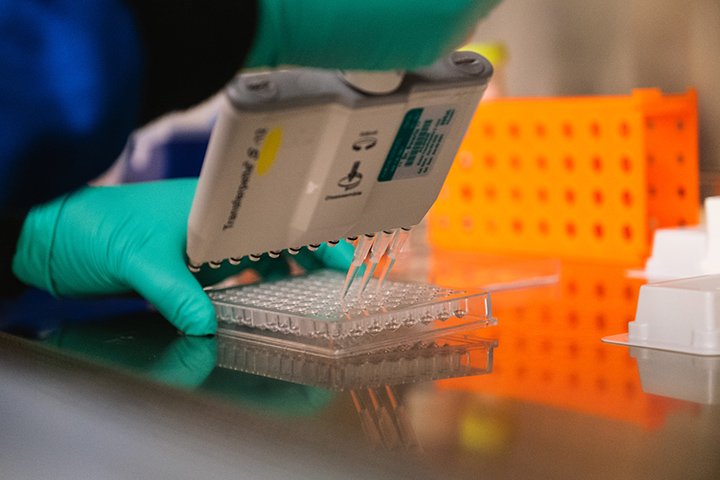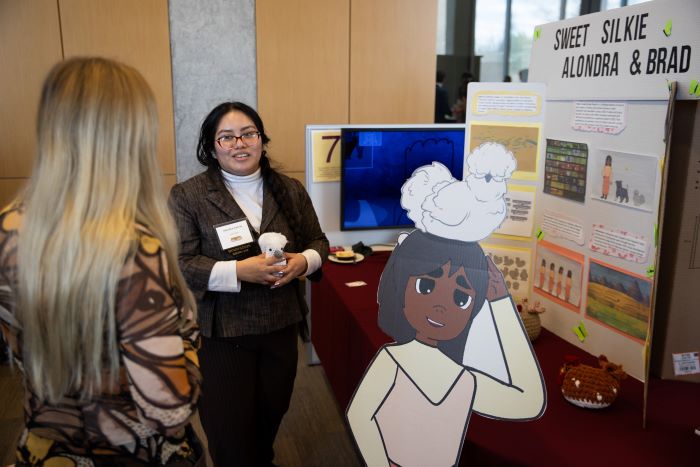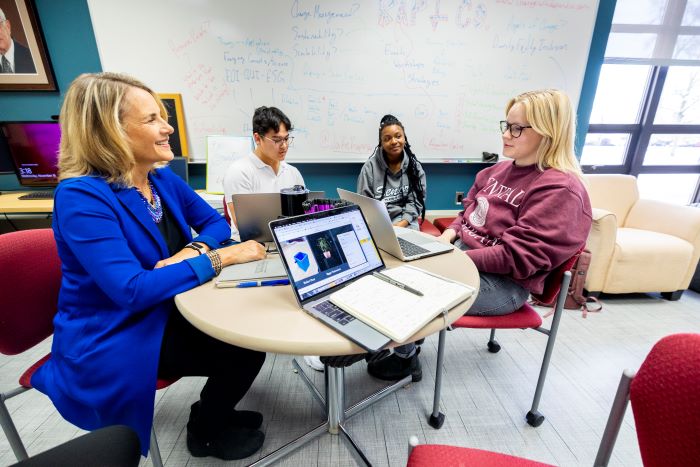
Start up
Passion. Potential. Pitches. Don't miss any of the 2025 New Venture Challenge excitement.
Tune in Friday, April 11 at 1 p.m. for great ideas and fierce competition. Then, join the judges, mentors, spectators and teams as they see who is going home with thousands of dollars in venture financing. The awards broadcast begins at 6:30 p.m. and one team will walk away as the overall best venture.
Central Michigan University’s College of Business Administration is the home of the Isabella Bank Institute for Entrepreneurship and the first Department of Entrepreneurship in the state of Michigan. We are a student-centric hub where experiential, curricular, and external entrepreneurial opportunities intersect.
Our mission is to maximize student success by fostering a campus-wide entrepreneurial mindset that promotes inter-disciplinary collaboration and the creation of new ventures.
We aim to create innovative programming, boost cross-campus and ecosystem collaboration and provide a comprehensive mentoring program.
Our institute provides extracurricular opportunities and is open to all undergraduate and graduate CMU students.
Are you interested in becoming an entrepreneur?
Every journey is unique. Explore the opportunities that interest you.

Research at Central Michigan University that might speed up diagnosing a tuberculosis infection – and make it more affordable – is taking the next step.
Chemical probes developed in Ben Swarts’ lab in the Department of Chemistry and Biochemistry have proven to be capable of rapidly and accurately detecting active TB bacteria in a laboratory setting. The probe can also determine whether the bacteria are drug-susceptible or drug-resistant, which can potentially aide in treatment decisions.
Now the team needs to test the probes out in more complex human clinical samples. Clinical samples will allow researchers to test the probes in a sample full of different host components and microorganisms. It’s hoped that the probes will identify only the active TB cells while ignoring everything else.
Swarts’ lab is collaborating with different partners to explore the diagnostic potential of the new chemical probe in South Africa, India, New Orleans, and southern California. In addition, CMU recently entered into a licensing agreement with Tocris Bioscience, which will produce the probe and make it commercially available to researchers.
The Swarts lab research team has focused on TB along two tracks. One involves developing better tools to diagnose active TB infections, Swarts said.
There are two kinds of TB infection, latent and active. Latent infections occur when a body’s immune system successfully contains the bacteria in someone’s lungs. People with latent infections do not become ill and are not capable of spreading it.
The bacterium itself is protected by a thick and waxy envelope, and if an individual’s immune system falters, the bacteria can turn into an active infection. Between 5-10 percent of people infected with the TB bacteria develop an active case.
A traditional TB scratch test detects antibodies created by the body to kill the bacteria, but it doesn’t indicate whether the infection is actively growing or latent, or even whether the infection has already been cleared by the immune system or cured by antibiotic treatment.
The current standard for diagnosing active TB infection is to use a culture test. However, Nicholas Banahene, one of Swarts’ researchers, said the bacteria that cause tuberculosis grow very slowly so running a culture test can take weeks.

A faster, cheaper diagnosis could focus on the bacterial envelope.
Many of the proteins used to build the envelope are well known and unique to the TB bacteria, Banahene said. Researchers in the Swarts lab have developed chemical probes that exploit these proteins to emit a bright fluorescence signal visible by a microscope.
A diagnosis could come within hours or days rather than weeks, said Banahene, who is preparing to graduate with his doctorate in biochemistry, cellular and molecular biology.
For someone with a latent infection, time is not pressing. People can live their entire lives with a latent infection and never be worse off for it, he said. Someone with an active infection is working against the clock, however.
While TB is most associated with the lungs, the bacteria can infect any organ in the body, he said. That includes bones, the brain and the heart. A speedy, early diagnosis is critical to treat the infection with the right drugs.
Antibiotic-resistant strains of the bacteria pose significant complications, requiring new antibiotics and prolonging treatment times for resulting infections.
In addition to possibly letting doctors diagnose an active infection faster, the chemical probes may also identify infections caused by antibiotic-resistant bacteria.
While running the probe test, a researcher could potentially test several samples and treat them with individual drugs, Banahene said. The ones that remain actively growing and emitting fluorescence are resistant to the drug they were treated with.
Down the road, chemical probe technology could also lead to insights for developing new treatments, Swarts said. Their team is developing probes to identify additional proteins that help to build and maintain the integrity of the thick envelope protecting the bacteria. With this information, it might be possible to develop novel inhibitors that disrupt envelope construction.
Without its protective envelope, Banahene said the bacteria would be more vulnerable to antibiotics and the body’s immune system.

Explore special opportunities to learn new skills and travel the world.

Present your venture and win BIG at the New Venture Challenge.

Boost your entrepreneurial skills through our workshops, mentor meetups and pitch competitions.

Learn about the entrepreneurship makerspace on campus in Grawn Hall.

Present a 2-minute pitch at the Make-A-Pitch Competition and you could win prizes and bragging rights!

Connect with mentors and faculty who are here to support the next generation of CMU entrepreneurs.

Are you a CMU alum looking to support CMU student entrepreneurs? Learn how you can support or donate to the Entrepreneurship Institute.